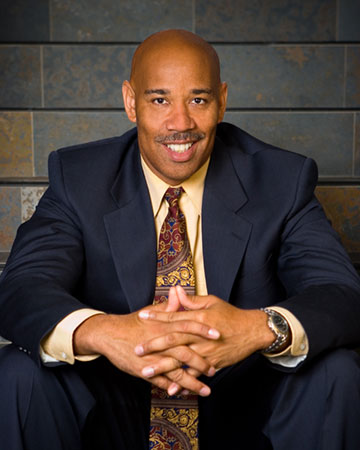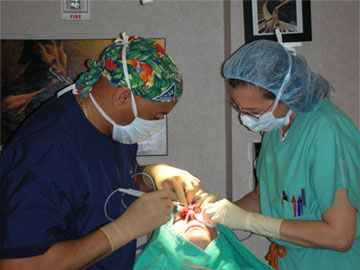
Three physicians in one – the vital role of the surgical dermatologist.
 The Virginia Dermatology & Skin Cancer Center was established by Dr. Brian L. Johnson, who began his medical training at the Uniformed Services University of the Health Sciences in Bethesda. His Navy medical career included service aboard the USS Yellowstone, the Kearsarge and the Iwo Jima. He participated in major deployments and field assignments with the Seabees and Special Forces.
The Virginia Dermatology & Skin Cancer Center was established by Dr. Brian L. Johnson, who began his medical training at the Uniformed Services University of the Health Sciences in Bethesda. His Navy medical career included service aboard the USS Yellowstone, the Kearsarge and the Iwo Jima. He participated in major deployments and field assignments with the Seabees and Special Forces.
He studied dermatology at Johns Hopkins, and completed a Mohs Surgery Fellowship at Northwestern Skin Cancer Institute in Chicago. He’s a Fellow of the American Academy of Dermatology, American College of Mohs Surgery and the American Society of Dermatologic Surgery.
With such impressive credentials, it’s hard to imagine that Dr. Johnson tried not to become a dermatologist. He always knew he’d go into medicine, but his father, Dr. Bernett L. Johnson, Jr., was a renowned Master Dermatologist, and he wanted something different for his own career. “I initially thought I’d go into orthopaedic surgery,” he says, “but when I went into the Navy, I frequently dealt with patients complaining of back and knee pain, which are very subjective symptoms. I knew that I wanted to be in a field where the cause of a patient’s symptoms were more objective or visual.”
He considered the fields he could go into where he could make a difference in his patients’ lives – and soon realized that was dermatology. “I already had a familiarity with it,” he says, “and I knew that there were cases – like melanoma – where I could literally be saving someone’s life.”
He also realized the specialty was very diverse, explaining, “Within the specialty of dermatology, you can subspecialize. My father subspecialized in dermatopathology, which focuses on the study of cutaneous diseases at the microscopic level.”
Dr. Johnson preferred the surgical aspect of dermatology, including the innovative subspecialty of Mohs Micrographic surgery.
Mohs micrographic surgery, a ground-breaking surgical procedure for treating skin cancers, was developed by Frederic Mohs, M.D. in the late 1930s. He developed the technique of removing skin cancers and looking at the margins at the same time. Dr. Johnson explains, “ the procedure wasn’t adopted by general surgeons because during those years, skin was considered a non-issue; if you weren’t an internist or a general surgeon, you really weren’t considered a true doctor.” Dr. Mohs tried to publish his findings, but surgeons then weren’t comfortable learning skin pathology and laboratory techniques, while dermatologists, who routinely treated skin cancers, embraced the procedure.
“Dermatologists picked up the technique and ran with it,” Dr. Johnson says, “and over the years, we’ve refined it to the point where we can use local anesthesia, remove the cancers and evaluate the margins under the microscope while the patient is waiting. It’s easier on the patient in many ways – notably, it completely eliminates the anxiety of having to wait days or even weeks for a biopsy report.”
A typical Mohs surgery.
A patient presents with a skin cancer on the nose. After administering a long-lasting local anesthetic, Dr. Johnson makes an incision around the visible tumor. “We cut in a circle, so we’re able to see the entire margin,” he says. “You’re always concerned when you’re cutting out any cancer, that at the edges of the incision there is normal tissue. Mohs is the best procedure for getting clear margins.”
He gives the tissue to his technicians, who freeze it, cut it thin and put it on a slide, where it’s evaluated to determine if any cancer remains. Dr. Johnson’s technicians are trained in the very specialized way Mohs sections must be cut: they use a machine called a cryostat, which cuts the tissue microns thin – so thin you could read a newspaper through it.
 “When we evaluate the tissue, we look at it in a clock fashion,” Dr. Johnson says. “We look at 12 o’clock, 3, 6 and 9 o’clock. If there’s cancer left at any of the points on the clock, we go back to the patient and remove any remaining skin cancer and evaluate that to make sure it’s clear.” Only when Dr. Johnson is satisfied that all of the margins are clear, does he begin the exacting work of reconstructing the area where the cancer was removed. “If I have to cut a large hole in someone’s nose, or on their ear or lip, we put that area back together so that they look close to normal and have minimal disfiguring scars.” It’s not just cosmetic: there’s a practical purpose as well. If the cancer is on the eyelid or the lip, the surgeon wants to remove as little tissue as possible, so the patient can maintain normal function. Successful reconstruction and or cosmetic technique is based on a surgeon’s skills and experience, not necessarily his or her specialty. Dr. Johnson has performed more than fifteen thousand Mohs surgical procedures and reconstructed over 95 percent of the wounds caused by the surgery.
“When we evaluate the tissue, we look at it in a clock fashion,” Dr. Johnson says. “We look at 12 o’clock, 3, 6 and 9 o’clock. If there’s cancer left at any of the points on the clock, we go back to the patient and remove any remaining skin cancer and evaluate that to make sure it’s clear.” Only when Dr. Johnson is satisfied that all of the margins are clear, does he begin the exacting work of reconstructing the area where the cancer was removed. “If I have to cut a large hole in someone’s nose, or on their ear or lip, we put that area back together so that they look close to normal and have minimal disfiguring scars.” It’s not just cosmetic: there’s a practical purpose as well. If the cancer is on the eyelid or the lip, the surgeon wants to remove as little tissue as possible, so the patient can maintain normal function. Successful reconstruction and or cosmetic technique is based on a surgeon’s skills and experience, not necessarily his or her specialty. Dr. Johnson has performed more than fifteen thousand Mohs surgical procedures and reconstructed over 95 percent of the wounds caused by the surgery.
Mohs surgeons are three doctors in one.
“We’re surgical oncologists, cutting out cancers. Patients don’t realize that dermatologists do more skin surgery than any other group of physicians,” Dr. Johnson says. “We’re also pathologists, reading slides to make sure all the margins are clear. And we’re reconstructive surgeons.”
From the patients’ standpoint, that efficiency means everything is dealt with on the same day, sparing them the ordeal of waiting for pathology and follow-up appointments. The cost savings can be substantial, but many think the convenience and lessening of anxiety are even more important.
Dr. Johnson maintains a robust practice in the other areas of dermatology as well.
There are three aspects to dermatology, he says. Medical dermatology deals with skin cancers, rashes, acne and other diseases of the skin. Surgery involves all types of cancer: the more treatable basal and squamous cell cancers and the more lethal melanoma – and is not limited to Mohs: Dr. Johnson treats cancers on all areas of the body, performed with regular incisions and procedures. The cosmetic arm of dermatology involves patients who want to enhance their appearance through non-surgical cosmetic treatments. These include Botox or chemical peels for frown lines and wrinkles, fillers for volume loss in the face, laser treatments for veins, hair or acne scarring and skin tightening using the latest radiofrequency machine.
Dr. Johnson employs a staff of specially trained professionals who assist him in all aspects of his practice, which has recently expanded to a fourth location. Until recently the only physician on staff, Dr. Johnson was recently joined by Dr. Donald Shenenberger and Dr. Michelle C Walters, both Board certified dermatologists who work in Virginia Dermatology & Skin Cancer Center’s Suffolk office.
Dr. Johnson remains convinced that he made the right decision years ago. He wanted to pursue a field that would make a meaningful difference in people’s lives, and in dermatology, he found it. “Some forms of skin cancer can be fatal,” he says. “Usually basal cells and squamous cells aren’t, but even those, if left to continue to grow, can be very destructive and disfiguring. And melanoma is one of the deadliest cancers, probably more so than colon or breast cancer. It doesn’t respond well at all to radiation or chemotherapy. With melanoma, as with any cancer, the best treatment is getting it removed as early as possible. We save lives when we do.”
Dr. Johnson sees patients at four locations:
241 Corporate Blvd., Suite 215, Norfolk VA 23502 / 757.455.5009
12695 McManus Blvd., Suite 4A, Newport News VA 23608 / 757.369.0439
1005 Commercial Lane, Suite 230, Suffolk VA 23434 / 757.925.1860
1035 Champions Way, Suite 100, Suffolk VA 23435 / 757.967.0790
Or, for more information visit: virginiamohs.com
A new location in Norfolk will be opened in May 2015.

